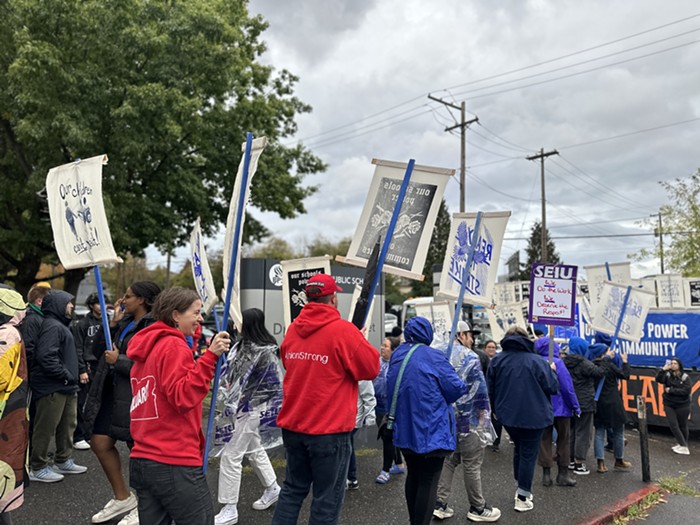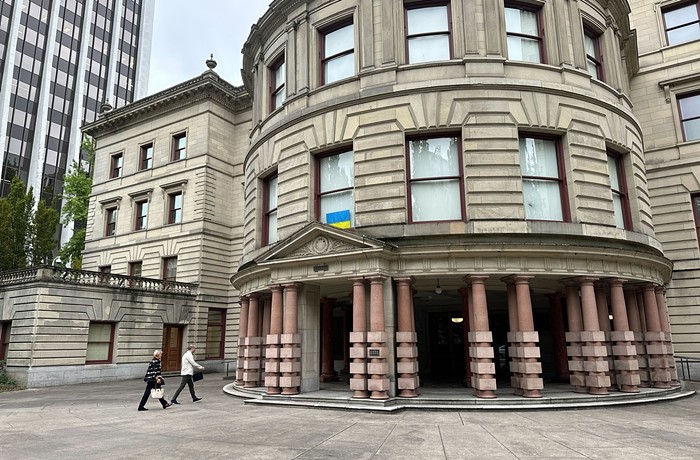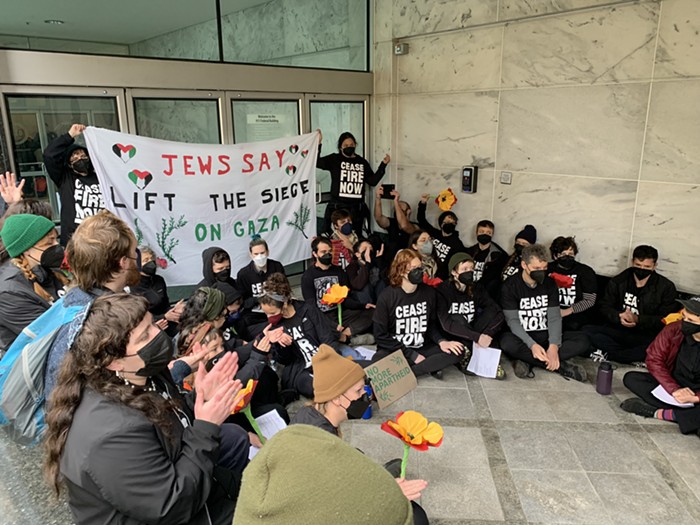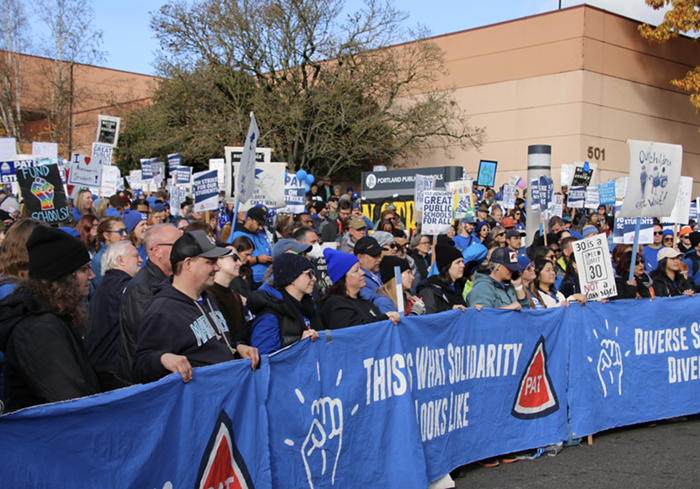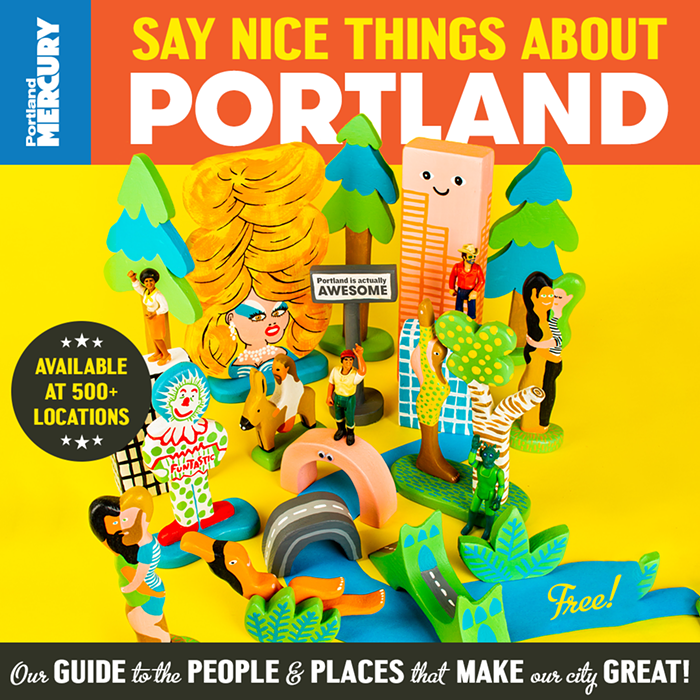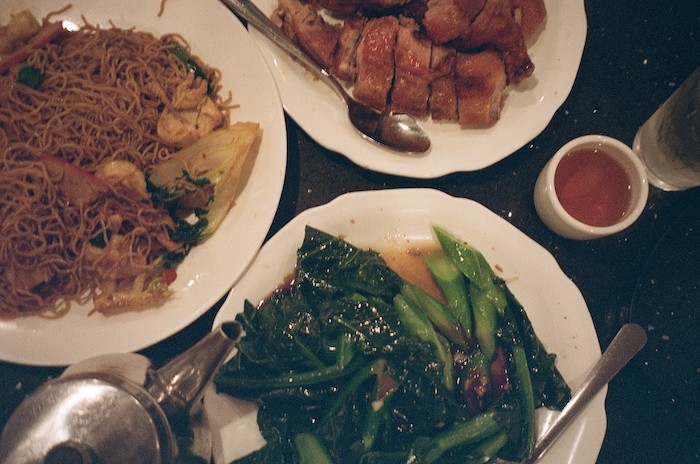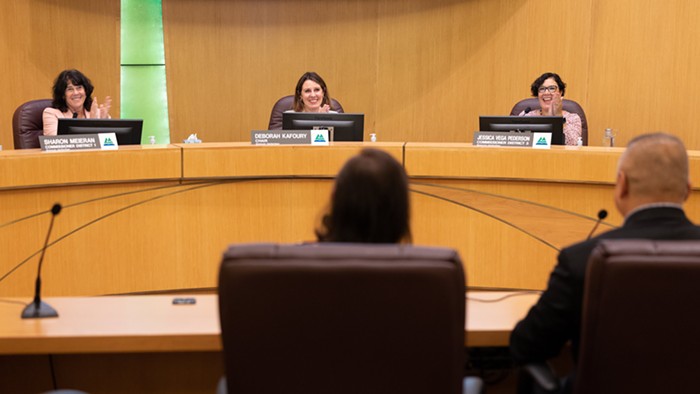It started when three skateboarders sat down on the west end of the Burnside Bridge--right in front of oncoming traffic. On Thursday, the 1000-person demonstration had already walked past the Morrison Bridge, where a dozen riot cops stood, batons resting menacingly in their palms. And, in spite of signs promising to "shut it down," it seemed as if the crowd would simply flood past the Burnside Bridge as well.
But, as the bulk of the march continued on, several protesters were desperately trying to stall the crowd's momentum and start a sit-in. Dressed in head-to-toe black and wearing a helmet, one activist stamped his feet, like an infant throwing a temper tantrum, screaming, "C'mon! Shut it down!"
Finally, realizing that the momentum of the crowd was washing past the Burnside Bridge, three skateboarders simply chose to sit down. Another man kneeled next to them, his arms outstretched to the sky, flashing peace signs with both hands. Their bold action inspired dozens to join them. Within minutes, the westbound lane of traffic was littered with bodies--some laying flat on the pavement; others linking arms and banging drums. Inspired by the bold success of the activists on the Burnside Bridge, other splinter groups of activists roamed the city and shut down other bridges, as well as temporarily closing I-5.
But now, after saying they would shut down the city--and succeeding--activists are confronted with a larger and more complex question: What to do with this power? Like Peter Parker first discovering his superpowers, activists must now determine what they'll do with their newfound strength: use their power for more party-stopping tricks, or for true political change?
Anti-war sympathizers, pro-war supporters, and fence-sitters all questioned the ultimate purpose of the sit-in and traffic-stopping marches. No one doubted the motives--a humanitarian concern and a deep-seated frustration with the Bush Administration's deaf and dumb response to dissent. But it seemed like the larger question was: Okay, what now? You oppose the war. Now, how do you propose to change foreign policy?
A young father, driving one of the first cars stopped on the Burnside Bridge, wondered out loud about the purpose of civil disobedience. "I definitely oppose the war, and I support these guys [out here protesting]," he explained, "but this is not helping me make up my mind. I just need to pick my kids up from school."
Some protesters explained that the purpose was to show resistance to the Bush administration. "It is better than apathy," said one woman, a high school teacher.
Others referenced sit-ins during civil rights movement. But those protests were different, namely because they directly addressed the problem that needed to be changed: Blacks were not allowed to sit in cafés or in the front of the bus, but they sat there anyway. The connection between stopping traffic and halting a war is less clear.
Does the answer lie in more precise protests, like those who attach Kryptonite locks to the doors of federal buildings to shut down the federal government? During the Vietnam War, students attacked recruiting stations and army bases.
One activist said the goal is to "broadcast anti-war messages" and suggested taking over media outlets like TV and radio stations. It is a strategy taken straight from the joint chief of staff's gamebook.
And while some activists believe in ruthlessly pressuring congressional representatives and senators to repeal Bush's war powers, others have suggested an even stronger approach to gain national attention: Taking over City Hall, and chaining themselves to the desks of those responsible for voting down the anti-war resolution. (On Tuesday morning, 50 activists did briefly occupy City Hall, but quickly dispersed.)
The anti-war movement has a lofty goal--make Bush listen and change foreign policy--but what it lacks is a clearly drawn-out map to reach that goal. From "support our troops" coverage on Channel 2 to postings on IndyMedia, the bulk of reporting has focused on scuffles with police. But more and more activists are recognizing the fight is not with police, and standing up to them is not the objective.
Activists have proven that they have awe-inspiring powers. Now can they transform that strength into negotiating power?


